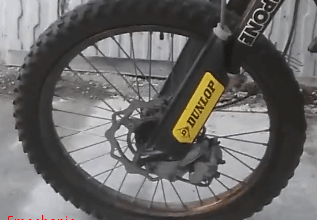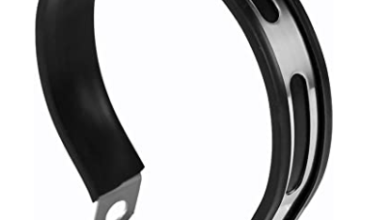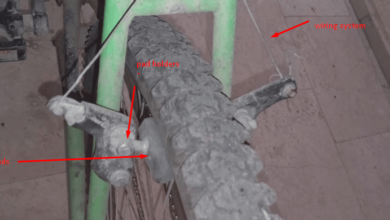How to Tighten Bike Brakes? Solutions for Different Types
For every vehicle, the brake systems are a very important safety feature that you need to take care of. Maybe you can overlook the other features of your vehicle, such as bikes or cars, but you cannot overlook the maintenance of the brake system of the different vehicles. This is because the brake systems are responsible for the application of the brake and safety for your own life. And you can ask the question of how to tighten the bike brakes. You can find different answers to this question, so we try to explain all the types of bike brakes.
How to Tighten Bike Brakes?
Different Kinds of Bike Brake Mechanisms Have Different Kinds of Tightening Mechanisms. First of all, you need to define which type of mechanism you have. And most of the time, there are three types of mechanisms like V-type brakes, caliper-type brakes, and classical brake pad mechanisms.
Tightening the Classical Brake Pad Mechanism
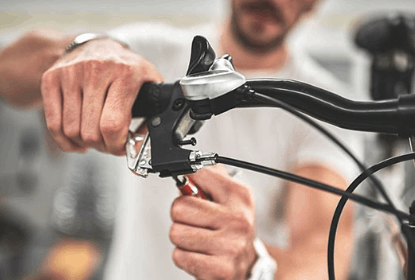
First, we need to understand the working structure of the classical brake pad mechanism. In the classical brake pad mechanism, two brake pads are attached to a very simple mechanism that is activated with the brake cable. Once you push on the brake lever on your bike or your steering, the cable is tightened to take the mechanism. Once the cable takes the mechanism, the mechanism pushes the brake pads to the brake rim section. So over time, the brake cable can lose them, and you need to tighten the classical brake pad mechanism of your bike.
There are two ways to tighten the classical brake pad mechanism of the bikes. First of all, you can adjust the tightening mechanism on your brake lever. Once you take a look at the brake level and if you take a look at the table inlet of your brake lever, you can see a very basic screw mechanism that you can adjust the tightening level of your cable. Once you rotate this screw to a clockwise site, the brake cable will be tightened. Or if the brake cable is over-tightened, you can rotate the screw to the anticlockwise side.
The second way to tighten the classical brake pad mechanism is to tighten it via the brake mechanism. The cable that we are talking about is directly attached to this mechanism. At the attachment site, you will see a very simple screw and no mechanism that you need to use a key to unscrew that mechanism. Once you unscrew it, the cable will be tightened. And once you pull the cable much more and if you screw the mechanism on the tightened cable, your brake mechanism will be tightened appropriately way. As you understand, it is very simple to do it.
How to Tighten Bike Brake Caliper Mechanism
Also, the brake caliper system is dependent on the cable system. The completely same cable system is valid for the brake caliper application. Normally, in vehicles, the caliper system is a hydraulic system that you cannot work on. But in bike systems, there is no hydraulic mechanism, there is just a cable mechanism that you can’t tighten with the very simple Allen key mechanism at the caliper site. So you just need to untighten the key that holds the cable on the caliper and tighten the cable by pulling it and tightening the Ellen key back into its place.
But you need to be sure that you didn’t adjust the alignment of the caliper system of your bike. The alignment is very important.
V-Brake Systems
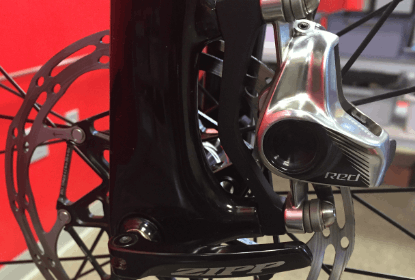
V brake systems in bikes also depend on cable adjustment. In general, the tightening mechanism of the V brake systems is generally the same as the other types. You just need to find the cable attachment point at the V brake mechanism at the ringside of your bike and untighten the bolt or the fastener with the appropriate tool, tighten your cable, and reattach the screen to its place.
Additional Tips
Before starting to tighten your brake cables and asking yourself how to tighten the brake cables, you need to ask yourself if you need it. So you need to test your brakes while riding your bicycle and check the brake performance.
Another important thing that we need to state is to tighten your brake, but before you need to look at the stations of the brake pads. If your brake pads are overused, you need to replace them with new brake pad applications. You can understand it by only looking at the brake pads. There’s a simple line on the brake pads that is the maximum allowed usage of the brake pads. If on the brake pads come to that line, this means you need to replace the brake pads today new application.
Another important thing to consider is to check if the brake pads are overtightened or not after the brake pad tightening. You can understand it if the rim touches the brake pads and creates a very little or strange noise while you are driving and you are not applying your brakes. Which means you tightened your brake application.
Conclusion on How to Tighten Bike Brakes
Here we try to summarize how to tighten your brake pads and what additional tips you need to know for the different kinds of brake system applications on bikes.
If you have comments and questions, you need to leave them below. Also, you can check the additional copies about the brake systems of vehicles that are available on our website.
